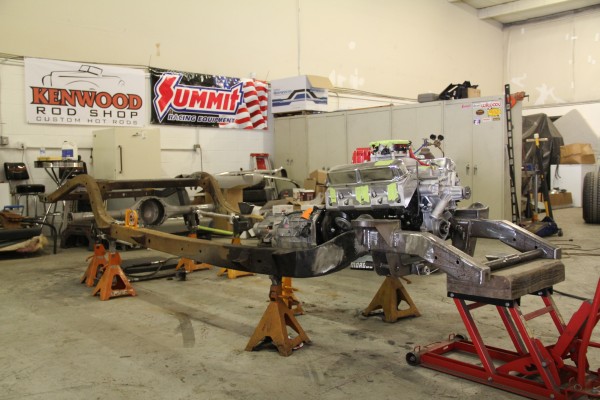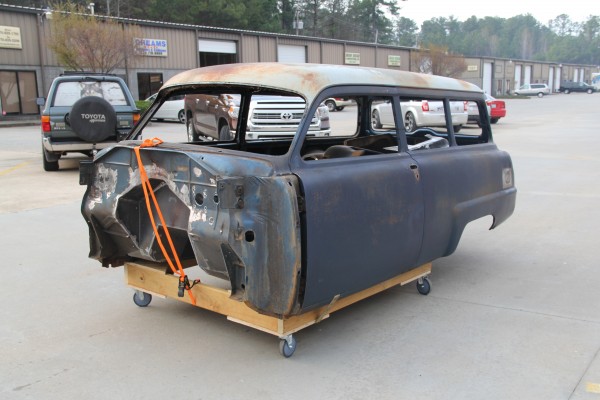With an early June deadline to meet to make the Hot Rod Magazine Power Tour, Randy Allgood and his staff at Kenwood Rod Shop are going guns a-blazin’ on Rutledge Wood’s 1953 Plymouth Suburban wagon project. The Plymouth’s body was sent off to Brian’s Paint and Body in Fayetteville, GA to get 60 years of paint and grunge removed in preparation for bodywork and paint. What color, you ask? Since the car is—cough-cough—supposed to be Mrs. Rutledge’s cruiser, she picked out a Sherwin-Williams custom green that she calls Rutledge Wood Green. It will be a standard Sherwin-Williams color, so you can ask for it by name!
With the big hunk of sheetmetal out of the way, Allgood got after the chassis. The BluePrint Engines fuelie 408 small block Mopar is sitting on the Heidts front crossmember. The 9 inch Ford rear axle housing and Heidts four-bar suspension is mocked up, waiting for Allgood to determine their final resting places. And Rutledge is at the shop just about every day he’s in town, checking on the progress and making loud gear-shifting noises (we kid, of course).
While the Plymouth looks like a collection of model kit pieces right now, you’ll be amazed at how quickly things will progress from this point. As we speak, the body is close to paint-ready and the chassis is essentially complete. There is plenty of work left to do, but we fully expect to see Rutledge and the Plymouth rolling into Summit Racing Equipment Motorsports Park on June 10 as part of the Hot Rod Power Tour.
Take a look at the photos above to catch up with the progress on Rut’s Suburban. (He’s posting project updates like crazy on his Facebook page, so make sure to check that out, too.) And watch the video below for a preview of what’s in store next for the Plymouth.














Comments